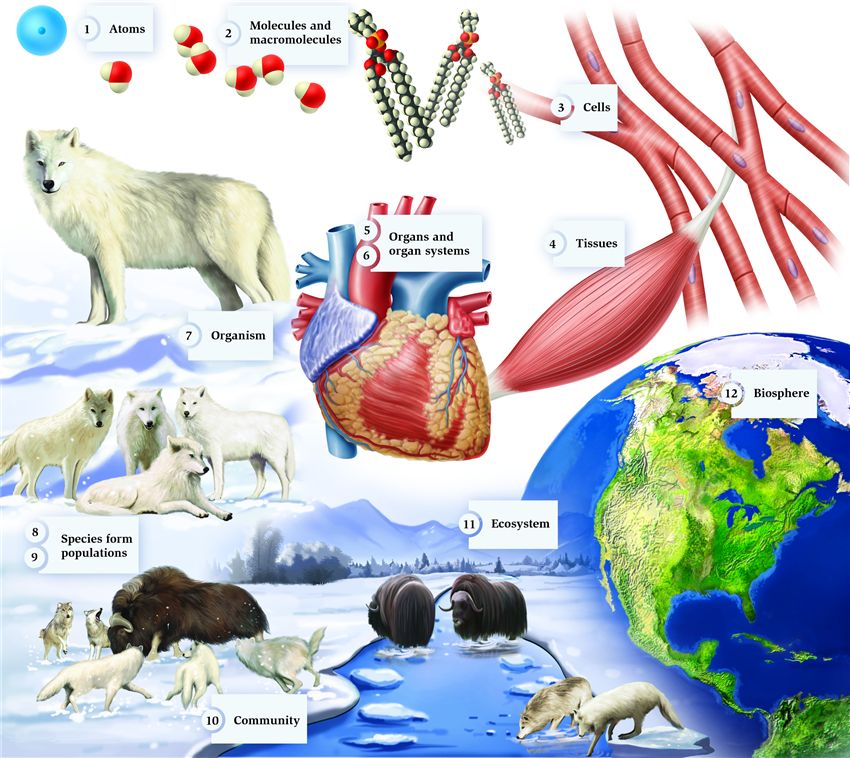 |
| Previous Image | Next Image |
| Description: Atoms (1) combine into small and large molecules (2). Macromolecules carry information, create compartments, and sometimes form organelles within cells (3). Multicellular organisms organize cells into tissues with specialized functions (4). Different tissues can be combined to form organs (5) and organ systems (6) in complex multicellular organisms (7). A group of interbreeding organisms of the same species ( 8 ) form populations (9) that interact with other species within their local community (10). This community of diverse organisms and their relationship to their physical environment define the local ecosystem (11). The ecosystem is strongly influenced by its global position with the consequent radiant energy and atmospheric condition for that biosphere (12) region. In turn, activity within ecosystems can influence the atmosphere and have potentially biosphere-changing consequences, such as global warming.
Picture Stats: Views: 12542 Filesize: 131.07kB Height: 758 Width: 850 Source: https://biology-forums.com/index.php?action=gallery;sa=view;id=124 Keywords: The levels of biological organization |
